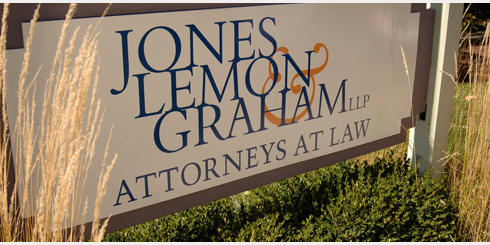Inflated electronic account statement is original Evidence of Debt and Security Agreement under insuring agreement E of financial institution bond
by Christopher Graham and Joseph Kelly
The factoring business: You’re an industrial bank. Your business is buying accounts receivable. You buy them at a discount. You expect customers to collect them and turn over the full proceeds or make up the difference. You profit by being paid the full face amount of those discounted receivables. Customers benefit by receiving immediate cash. They also grant you a security interest in their assets to secure repayment. This way of financing business operations is “factoring.”
You have a factoring agreement with a trucking company. You agree to purchase all of company’s receivables. Your agreement is an Accounts Receivable Purchase and Security Agreement.
Purchases are on a rolling basis. Company reports sales periodically. You pay company, discounting the receivable amounts. Company guarantees payment, securing its guarantee with collateral including a large reserve account and all other assets. It grants you a security interest in those assets. And as required under the agreement, it provides electronic account statements on a rolling basis showing its obligation. Those statements naturally are sent electronically. Company hits send on its computer directing electronic transmission to your computer. You start your computer, and there it is! The wonders of the internet. No mail. No hard copy transmittal.
The factoring fraud: One day someone at company wants even more cash. But there’s a problem. Company is not generating enough sales to get the desired the cash. So someone electronically inflates receivables in the electronic account statements to whatever is needed to get that cash. It’s amazing what you can do with a few strategic key strokes and devilish ingenuity.
Company electronically transmits inflated electronic account statements; you provide the cash. Happy days are here again! This occurs repeatedly. And before you know it, we’re talking real money. When the scheme is discovered, there’s nowhere near enough receivables or other assets to repay you. Your loss is over $11.5 million!
The financial institution bond claim and suit: What to do? Didn’t we buy a financial institution bond? Sure did. Isn’t it different from the standard Form 24 Surety Association of America bond? Sure is. Isn’t it broader coverage for altered and forged, counterfeit, and lost and stolen documents of a type described in the bond’s insuring agreement E, Securities coverage? You think so. Let’s make a claim. And so you do. But insurer says pound sand. So you sue. And once again a court must decide a fascinating issue of insurance contract law.
Decision in a nutshell: Who wins? The insured bank, says the court in Transportation Alliance Bank, Inc. v. Bancinsure, Inc.*, Case No. 1:11CV148-DAK-EJF (D. Utah Feb. 21, 2014).
Why? Per this court, the undisputed material facts show bank suffered a loss within insuring agreement E, of this bond’s “broader”-than-Form-24 Securities coverage. This was a “Loss resulting directly from the Insured [bank] having, in good faith, for its own account or for the account of others,
(1) acquired, sold or delivered, given value, extended credit or assumed liability on the faith of any original . . .
(e) Evidence of Debt, . . . [and] (g) Security Agreement, . . . which (ii) is altered . . . .”
“Loss resulting directly”: How was this “Loss resulting directly” from those covered acts concerning an alteration of those covered documents? According to the court:
[Bank’s] loss from [trucking company’s] factoring fraud was the amount it over-advanced to [company] based on the fraudulent alteration of the amount of the various accounts receivable. [Bank’s] loss resulted directly from [its] having made the over-advances. [Bank] made the over-advances because and only because [company] fraudulently altered its accounts receivable. If [company] had not made the alterations, [bank] would not have over-advanced and would not have suffered the losses. This interpretation and explanation of the phrase “resulting directly from” is reasonable and follows from the ordinary meaning of the words, as the phrase is not a defined term in the Bond.
Original Evidence of Debt: But how were the over-advances extended “on the faith of any original . . . Evidence of Debt”? Per the court, the bank over-advanced on the faith of a combination of the A/R Purchase and Security Agreement and electronic account statements. That combination qualified as an “original” Evidence of Debt. Under the bond, “Evidence of Debt means an instrument . . . executed by a customer of the Insured [bank] and held by the Insured [bank] which in the regular course of business is treated as evidencing the customer’s debt to the Insured.” As the court explained, the electronic account statements are “instruments” “executed by a customer of the Insured,” namely, the trucking company customer; “held by [the] Insured” bank; and “in the regular course of business . . . treated as evidencing the customer’s debt to the Insured [bank].”
Instruments: If not hard copy, how did the account statements qualify as “instruments” as required for an Evidence of Debt? As the court explained: “The electronic account statements qualify as “instruments” for the same reasons they qualify as originals . . . .”
“Originals”: Regarding why they qualify as “originals” (and thus instruments):
[I]n the absence of a definition to the contrary [(there was no definition)], electronic transmissions are a way of life and are just as original as a printed, hard copy document that contains the same information. Indeed, by omitting Form 24 defined terms like “Original” and “Written,” [insurer] allowed for coverage based on electronic information, alterations, and transmissions. The electronic account statements [company] fraudulently altered and then transmitted to [bank] under the terms of the A/R Purchase and Security Agreement (itself a hard copy document) are reasonably considered to be originals for purposes of determining coverage under the Bond.
The court also cited a dictionary definition of original as its “plain meaning”: “Dictionaries define ‘original’ as ‘not secondary, derivative, or imitative,” or “being the first instance or source from which a copy, reproduction, or translation can be made.'” It also stated: “The ordinary meaning of the term ‘original’ includes electronic originals—particularly in today’s banking world where most people do most or all of their banking online, and electronic copies are widely considered originals.”
Regarding the definition of “Original” in Form 24, the court stated:
Form 24, unlike the Bond in this case, does define the term “Original” (with a capital O) in section 1(q) of the Conditions and Limitations of F&SA: “Original means the first rendering or archetype and does not include photocopies or electronic transmissions even if received and printed.” Had [insurer] included this definition of “Original” in the Bond, the electronic account statements that [bank] received would not be considered “originals.” The omission of the F&SA Form 24 definition of “original” in this Bond, which would have excluded electronic documents if applied, must be assumed to be deliberate. The Form 24 defined term and requirement that the documents be “Written” also was omitted from the Bond.
In concluding electronic statements were originals, the court also noted decisions “recognize[ing] that electronic documents cannot be distinguished from hard copies” and Utah’s Uniform Electronic Transactions Act (“UETA”), applicable to “‘transactions between parties each of which has agreed to conduct transactions by electronic means,’ with the parties’ intent to be determined by ‘the context and surrounding circumstances.'” Regarding the UETA, the court explained:
[Company] and [bank] intended to transact through electronic means when [company] gave [bank] access to its computer system. UETA therefore provides that “[a] record . . . may not be denied legal effect or enforceability solely because it is in electronic form.” . . . UETA also authoritatively states that an electronic document is equivalent to an original document for retention and presentation purposes. . . . Not only does UETA demonstrate that the banking world widely recognizes the reality and enforceability of electronic transmissions, but in the last decade several other federal acts have granted legal validity to electronic documents.
“Executed”: But then if not signed, how did those account statement “instruments” qualify as “executed” as also required for an Evidence of Debt? According to the court:
They were executed in the only way electronic data can be executed—electronic transmission at the command of the sender, [trucking company], which was a customer of [bank], the Insured. [Bank] treated the electronic account statements, and in particular the fraudulently altered amounts, as evidencing [company’s] debt to [bank].
Further:
[T]he Evidence of Debt definition requires that the instrument be “executed,” not that it be signed. “Execution” is a broader concept than “signed.” “As Black’s Law Dictionary indicates, there is more than one meaning for the term `execute.'” . . . Again, an electronic transmission is executed or done or performed when the sender transmits or “gives” the electronic document by hitting the send button and directing it to the intended recipient.
Alterations: But the A/R and Security Agreement wasn’t altered. So how was the Evidence of Debt, the combination of the A/R and Security Agreement and account statements “altered”? Well, as the court explained:
While the term “alter” is not defined by the Bond, the electronic change that [company] made reasonably constitutes an alteration under the ordinary meaning of the term. . . . The alteration occurred by simple key strokes in which [company] overwrote the correct account receivable data with false data, which it sent to [bank]. Indeed, electronically altering an amount such as $1,000 by placing a 2 in front of the 1 to make it $21,000 is no different substantively from taking a pen and writing in a 2 on a hard copy document. See, e.g., Metro Fed. Credit Union v. Fed. Ins. Co., 607 F. Supp. 2d 870, 881 (N. D. Ill. 2009). The alterations occurred in the only way an electronic alteration could occur — by using key strokes to overwrite or change the account data.
Original Security Agreement: How were over-advances extended “on the faith of any original . . . Security Agreement” that was “altered”? Per the court, the bank over-advanced on the faith of a combination of the A/R Purchase and Security Agreement and altered electronic account statements. The reasons why the court considered the statements “altered” and “original” are stated above. As for why the court considered the combination of the A/R Purchase and Security Agreement and altered statements a “Security Agreement” as defined under the bond:
Under the Bond, “Security Agreement means an agreement which creates an interest in personal property or fixtures and which secures payment or performance of an obligation.” . . . [Company’s] debt to [bank] was repayment of the full amount of the stated receivable either by collection, application of the reserve, or otherwise. The chief security for [company’s] repayment obligation was the reserve account, as set forth in the A/R Purchase and Security Agreement, but the Security Agreement also included [company’s] various other assets. Therefore, the A/R Purchase and Security Agreement created an interest for [bank] in that reserve account, which secured [company’s] payment or performance of an obligation. This satisfies the definition of Security Agreement.
“Actual physical possession”: But isn’t coverage under insuring agreement E also conditioned upon the insured bank or authorized representative having actual physical possession of an altered original Evidence of Debt or Security Agreement? Sure is. But this court found that “condition precedent” satisfied as well. It was undisputed that bank physically possessed the signed original security agreement. As for the electronic account statements, the court explained:
The court finds that [bank] had actual physical possession of both the Evidence of Debt and the Security Agreement in the form of electronic data. There is no difference between possessing a hard copy of an Evidence of Debt or Security Agreement and possessing the same data in its original electronic form on a secure server, to be viewed on a computer screen, and which was transmitted electronically instead of through the mail.
Tags: Financial Institution Bond, Insuring Agreement E, Securities, Evidence of Debt, Security Agreement, direct loss, causation, “Loss resulting directly from,” original, actual physical possession, electronic account statement, factoring, Form 24, Surety Association

![MH900189634[1]](http://www.joneslemongraham.com/blog/wp-content/uploads/2014/03/MH9001896341-300x300.jpg)
![MH900189631[1]](http://www.joneslemongraham.com/blog/wp-content/uploads/2014/01/MH9001896311-300x300.jpg)
![MH900189605[1]](http://www.joneslemongraham.com/blog/wp-content/uploads/2014/01/MH9001896051-300x300.jpg)





![MH900189590[1]](http://www.joneslemongraham.com/blog/wp-content/uploads/2014/02/MH9001895901-300x300.jpg)